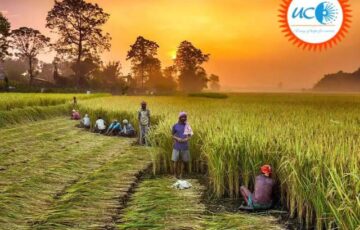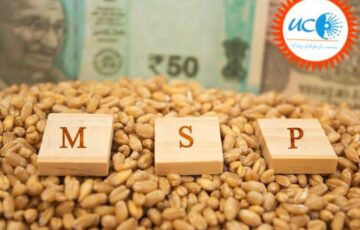Q. Agristack can serve as a foundation to build innovative agri-focused solutions, thus enabling creation of a better ecosystem for agriculture in India. Comment. Also, discuss the concerns associated with it.
Approach:
- Briefly explain Agristack in the introduction.
- Bring out the benefits of Agristack.
- Discuss the concerns associated with it.
- Conclude accordingly.
Answer:
Agristack is a collection of technologies and digital databases proposed by the Union government that focuses on farmers and the agricultural sector. It may have a farmer’s stack, a farm stack, and a crop stack integrated into a technology platform linking existing digital land records, cadastral maps of farms and information.
Farmer’s stack can consist of farmer data with Aadhaar as a unique identifier and farms stack can have geospatial information on each farm. Government schemes such as Pradhan Mantri Fasala Bima Yojna, PM-KISAN and soil health card will be integrated through a common database along with land record details over a period of time.
Role of agristack in enabling a better ecosystem for agriculture in India.
- Improved access to formal credit: It can ensure close monitoring of the flow of agricultural credit to specific land parcels, thus making credit flows and interest subventions become more transparent.
- Improved crop insurance products and delivery: It can be done especially with geographic information systems (GIS) and remote sensing technologies.
- Smooth mechanism for marketing and price discovery: It can enable the provision of market intelligence for de-risking commodity price fluctuations, demand-supply forecasting and weather advisory. A marketplace can be created where various entrepreneurs and suppliers of products and services can meet.
- Better quality of input: Agristack could address the asymmetry in information flow by providing all information around inputs like seed, chemical fertilizer and pesticides manufacturing companies, machinery companies or fin-tech companies.
- Technological upgradation: GIS and IoT (internet of things) services can be deployed to give feedback to stakeholders. For example, at the post-harvesting stage, a trigger to harvesting equipment suppliers and buyers may be sent, who can approach the cultivator for providing necessary services to the farmers.
However, recently many organizations that work for farmer’s rights and digital rights flagged concern over government’s plan of creating Agristack owing to following concerns:
- Data security: It is being implemented in the absence of data protection legislation. Without such safeguards, private entities could exploit farmer’s data to whatever extent they wish to.
- Financial exploitation: Once Fintech companies are able to collect granular data about the farmer’s operations, they may offer them usurious rates of interest precisely when they would be in the direct need for credit.
- Exclusion error: Proposed farmer’s database will be based on the digitized land records. There might be exclusionary issues even for land owning farmers without proper land records, while entire categories of landless farmers will be completely excluded. Making land records the basis for farmer databases may exclude tenant farmers, sharecroppers and agricultural laborers from the centralized database.
- Digital access: There is a massive digital divide in the country with major issues pertaining to digital access and literacy in the country.
There is no denial that there is potential in data and technology in empowering farmers but government should prepare a stronger framework to protect the interests of the farmers whose data is being used. Also, since agriculture is a state subject, it is critical that state governments are taken on board. There is a need for creation of common agricultural data standards and sharing mechanisms through inter-ministerial/ center-state consultations.







